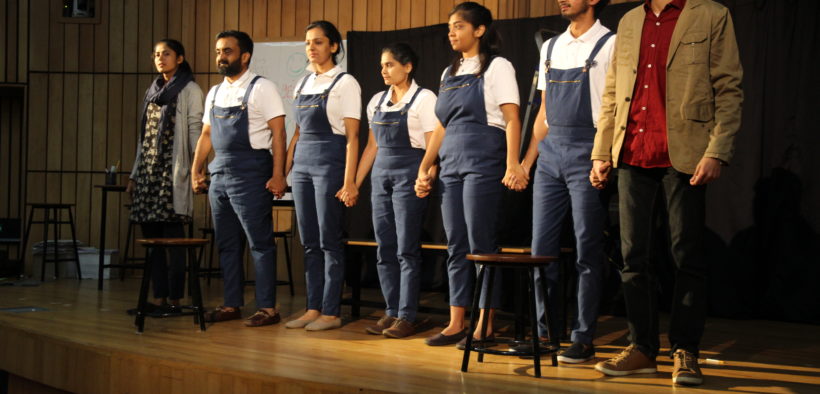Taming The Emperor

A Bengaluru-based theatre group rises up to the challenge of creating a play from Dr Siddhartha Mukherjee’s award-winning book on cancer
By Rosy Jose
It is hard to look at a tumour and not come away with the feeling that one has encountered a powerful monster at its infancy, wrote Dr Siddhartha Mukherjee, in his Pulitzer Prize-winning book, The Emperor of All Maladies: A Biography of Cancer. Cancer isn’t one disease; depending on the method of classification, there are more than 200 types. And Mukherjee’s non-fiction book, with 500- odd pages, is an honest and exhaustive attempt on the subject. Bangalore Little Theatre (BLT) rose up to the major challenge of adapting this book to the stage. The idea blossomed from conversations between Vijay Padaki, a founding member of the Bangalore Little Theatre, and the health and humanities division at St John’s Research Institute. The adaptation process began with conversations with a team of doctors and medical historians at St John’s Research Institute, to understand which parts of the book stayed with them, and which were most relevant.

Of the seven actors, five play multiple roles, slipping from one role to the other, sometimes right on stage, thus embodying a total of more than 20 characters.
The playwrights then combed through the book, finalizing on those stories that could be best captured through the medium of theatre. The script is not a comprehensive adaptation of the book. “We often joke that there is enough material in this book for two more full-length plays,” laughs Kavya Srinivasan, one of the playwrights. It took about two months of rehearsals to get this docu-theatre ready for the stage. Of the seven actors, five play multiple roles, slipping from one role to the other, sometimes right on stage, thus embodying a total of more than 20 characters. The play has a fairly enthusiastic and supportive cast, who, in spite of work or college commitments and bad traffic, have made time and effort for rehearsals. In terms of experience, some of the actors are active and well-known in the Bangalore theatre scene; for others, it is their first or second production.
With over 20 shows to perform at, the directors made the tough call to double cast each role, which meant double the effort. “We needed a back-up plan, just in case one of the actors wasn’t available for a particular show,” explains Murtuza Khetty, who directed the play along with Deepak Mote. In order to make the play stage-ready with minimum requirements, the production team kept the design elements (costumes, set, lighting, and music score) simple and mobile. Though they tried to bring a change in mannerism for each of the characters, much of the distinction was still made through the costume. The team used a bass drum to show the passage of time or to heighten the tension in certain scenes. The show depicts different spaces with minimal props—a few tables, chairs, benches and ladders that move during the course of play. “Be it a classroom or a very large 500-seat auditorium, we tried to make it workable for both situations,” says costume and set designer Aruna Nori. The play is part of the History of Ideas program at BLT, (which looks at people and events that have had a significant impact on history), with support from St Johns and Tata Memorial Centre. The team has done 13 shows, including the ones at St Johns and The National Centre for Biological Sciences.
Unfortunately, the response from the general public is not very encouraging, perhaps because a play about cancer doesn’t make for great evening entertainment. Having said that, many who did manage to see it, have expressed appreciation. “Especially those who have read the book wonder how we managed to pull off this challenging task. We’ve tried to keep it simple,” says playwright Ravi Chari. “When we contacted Dr Siddhartha Mukherjee by email explaining the context and the idea, he immediately responded saying, ‘go ahead’. He even tweeted about it. We were so overwhelmed by his support,” says Manjulika Vaz, Lecturer, Health and Humanities, St John’s Research Institute. After fulfilling their show commitments till April, the team has decided to take a break from public shows and focus on institutional invitations. They already have invitations from Jawaharlal Nehru Centre for Advanced Scientific Research, Bengaluru, the Indian Institute of Science and Tata Memorial Hospital, Mumbai, and the Translational Health Science and Technology Institute, Gurgaon, among other.
















